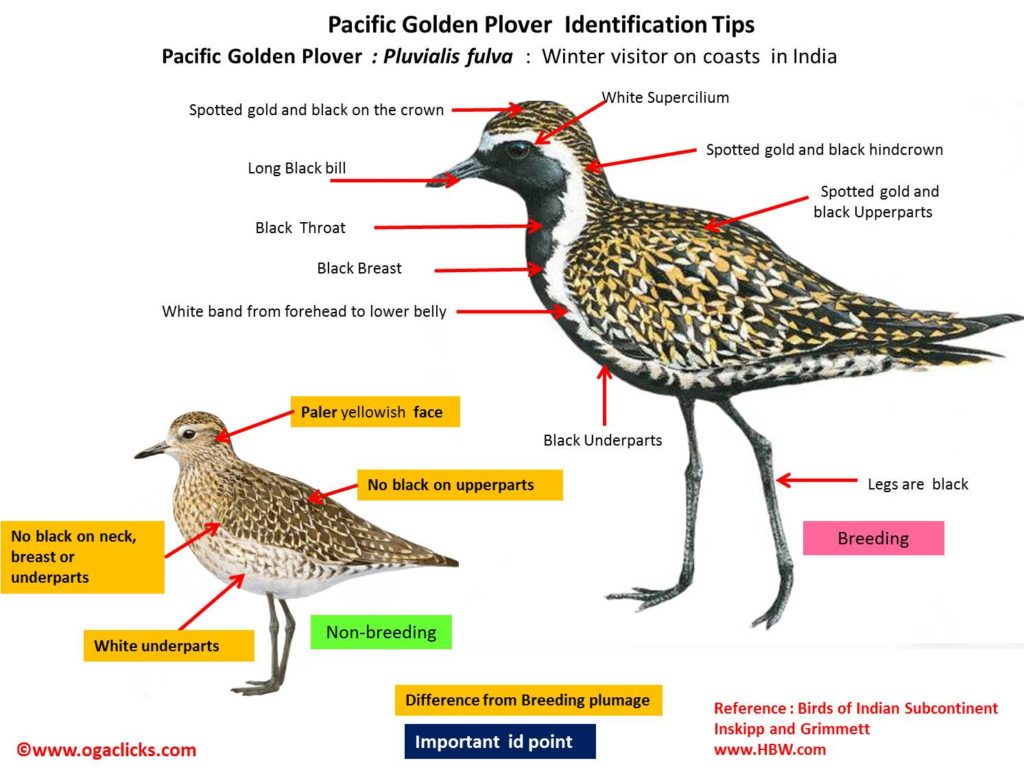
Pacific Golden Plover Pluvialis fulva
Etymology:
- Pluvialis : Latin word for related to rain derived from pluvial – rain
- Fulva: Latin word for tawny, yellowish brown
Vernacular Names: Hindi: Chhotabatan, SunehriBatan, Sans: Suvarnakurri, Ben: Sonabatan, Mani: Nong-gang, Guj: Soneribatanatitodi, Soneribatan, Mar: Sonnchilkha, Sonchilkha, Ta: Kalporrukki, Mal: Manalkozhi, Sinh: Oleyiya, Ranawatuwa
Distribution in India : Widespread winter visitor in coastal region and North East of India
Description: Size of 23–26 cm; wt. of 100–228 g; wingspan of 60–72 cm. The breeding adult is spotted gold and black on the crown, and back on the wings. Its face and neck are black with a white border, and it has a black breast and a dark rump. The legs are black. The female is less black than male. In non-breeding plumage, the black is lost and the plover has a yellowish face and breast, and white underparts. The juvenile as non-breeding adult, but has brown barring on flanks.
Habitat: It is found in tundra, fields, beaches and tidal flats.
Food Habits: They eat insects and crustaceans and some berries. It forges for food on beaches gleans and probes in mud, sand and pastures and usually catches prey by sight.
Breeding Habits: They breed in northernmost Asia into western Alaska during May-Jul. They are single-brooded, but will lay replacement clutch if first lost. Nest on dry spots, on hummock, lichen, Dryas or moss tundra; nest is shallow scrape lined with lichens, willow leaves and other materials. They lay a clutch of 4-5 eggs.The incubation period is for 22–25 days, by both sexes, starting when clutch is complete. After hatching, chicks and parents move to moist shrubby or grassy tundra or patches with green moss; chick tended by both parents, or by male only if brood is late, with fledging taking about 26–28 days.